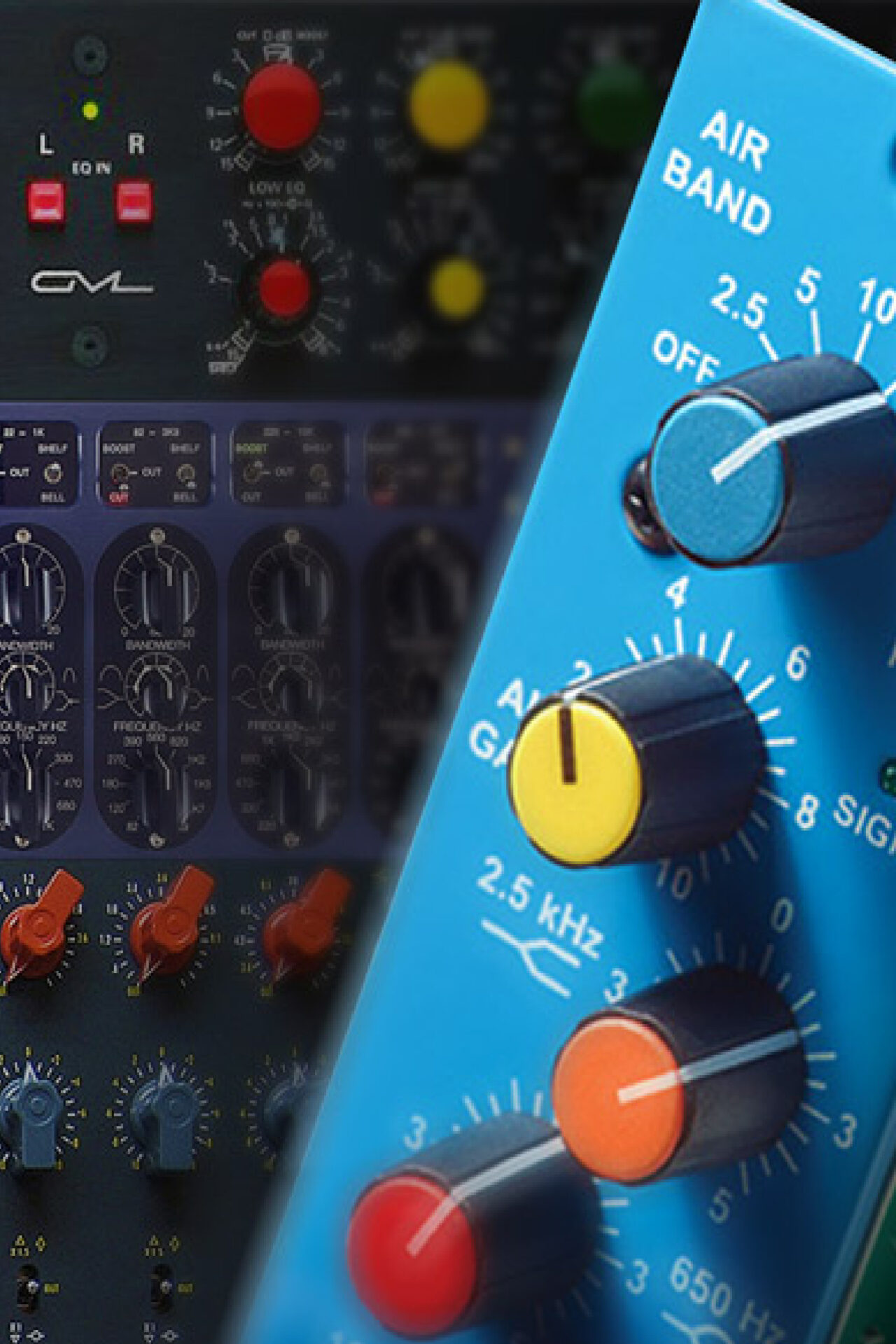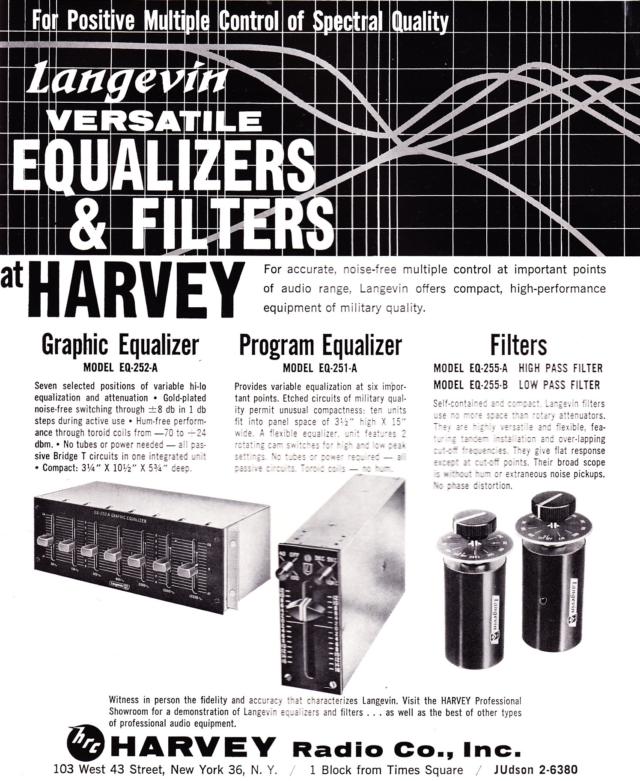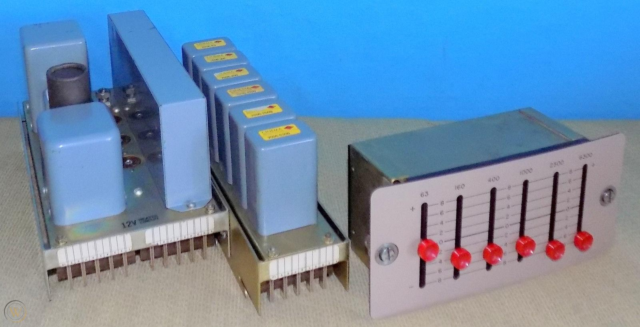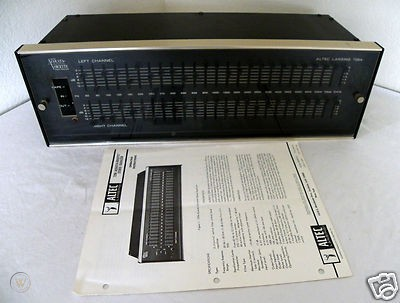EQ a.k.a Equalizer is not an uncommon term for an audio engineer or an audiophile.. Equalizer handles the processing and controlling the frequency in the audio spectrum. Nowadays we are familiar with different EQ hardware’s and also hundreds of popular EQ plugins, and also analogue emulations of EQ hardware’s. Let’s take a peek into the...
Sound EngineeringEARLY DAYS OF EQUALISATION

EQ a.k.a Equalizer is not an uncommon term for an audio engineer or an audiophile.. Equalizer handles the processing and controlling the frequency in the audio spectrum. Nowadays we are familiar with different EQ hardware’s and also hundreds of popular EQ plugins, and also analogue emulations of EQ hardware’s. Let’s take a peek into the earlier days of Audio Equalizers

The Equalizers dates back even before the music production applications. Passive filter circuits were available in the electronics fields for different uses in the electronics.
The first application of EQ circuits came in the Telephony systems . 1400 kilometer long Graham Bells’ telephone system connected New York and Chicago through a pair of lines. Then the technicians came to notice that these pairs of wires act as a bigger High-Cut Filter which physically as long as the wires are causing the high frequencies and sibilance’s and some useful information is deteriorating in the receiving end. Thus Bell laboratories developed and installed fixed frequency filters to restore the top end of the signal thus creating an audio equalization of the signal.

(In 1892 the first long-distance telephone line between NYC and Chicago was established. Credit: NYC Dept. of Records)
First operator (user) variable Equalizer was designed by John Volkmann from RCA in the 1920s. This variable equalizer had a set
of selectable frequencies with boosts and cuts. This variable equalizer was developed for purpose of the equalization of the motion picture playback system in movie theatres.
In 1949 the gramophones were introduced with tone control circuits for bass and treble boosting and cutting circuits.
Peter Baxandall introduced tone controls using potentiometers instead of switches in 1952 which was more user controllable EQ.
In the 1950s EQ was popularly used in Long Play disc production and playback systems The Recording Industry Association of America (RIAA) introduced pre-emphasis and de-emphasis eq curves in mastering and playback system respectively in order to reduce the groove width by reducing the low frequencies and thereby increasing Signal to Noise ratio by increasing high frequencies, and while playing back a de-emphasis curve which is almost reversed structure of pre-emphasis EQ curve is used.

(RIAA emphasis eq curve, resultant response is happening in playback)
The Langevin Model EQ-251A was the precursor to graphic equalizer. It was the first Equalizer to use slide controls. The EQ-251A consisted of two passive EQ sections :- a bass shelving filter, and a pass band filter. Each filter had switchable frequencies and used a 15-position slide switch which was assigned for adjusting cutting and boosting the signal. Langevin Model EQ-251A was also called program equalizer.


As mentioned before, cinema engineering made a lot of technical advancement in the field of equalization. A true graphic equalizer was invented by Art Davis’s company, Cinema Engineering which was called Type 7080 Equalizer.

Type 7080 had 6 bands with boost/cut range of 8 dB, adjustable in 1 dB steps. The center frequencies were 80 Hz, 200 Hz, 500 Hz, 1.25 kHz (labeled 1.3 kHz), 3.2 kHz (labeled 3 kHz), and 8 kHz. It was a revolutionary invention at that time. Later Davis moved to another company , Altec and invented another improved version of the EQ called Altec Lansing Model 9062A EQ.

(It featured 7 bands for cutting or boosting 8dB, adjustable in 1 dB steps.)
In 1967 Davis along with Jim Noble and Don Davis developed the first 1/3 octave variable notch filter set, the Altec-Lansing “Acousta-Voice” system.

(ALTEC LANSING ACOUSTA-VOICETTE STEREO EQUALIZER 729A)
The Acousta-Voice system also helped in the room acoustic mode control; you can now select a frequency range and notch it out. It was popular through the 70s and made a notable impact in the audio industry and acoustics and playing back system like large cinema halls.
All these systems were graphic equalizers, however the audio engineers are limited to the band numbers and the frequency bands available for frequency manipulations. In 1967 Walker introduced API 550A into the market, you may be familiarized with the analogue emulation plugin of the same in the waves bundle.

Like the other equalizers in that period, this also had selected frequencies and control for cutting or boosting at that frequency with fixed Q value or fixed bandwidth. This was a popular option among the other equalizers of that time.
In 1971 Daniel Flickinger invented sweepable EQ , which had the adjustment of frequency and gain, in three overlapping bands of fixed width. It was another revolutionary invention in the field of EQ. This idea became very popular among the audio engineers, Mixing desks started to equip these eq sweepable EQ circuitry in their channel strips.
Meanwhile parallel to this developments are some engineers like George Massenburg ,Bob Meushaw, Burgess Macneal were independently working on the similar concept like Swep – Tunable EQ and developed parametric eq in which , besides the frequency and gain, another parametric can be adjusted , now we call it quality factor Q , or also popularly known as bandwidth.

(ITI ME 230 parametric EQ invented by Massenberg on 1969)
The EQ circuit improved its versatility when the digital EQ era started by Yamaha. Still looking back to the growth of most commonly used tool in audio industry , like EQ is quite a journey.

